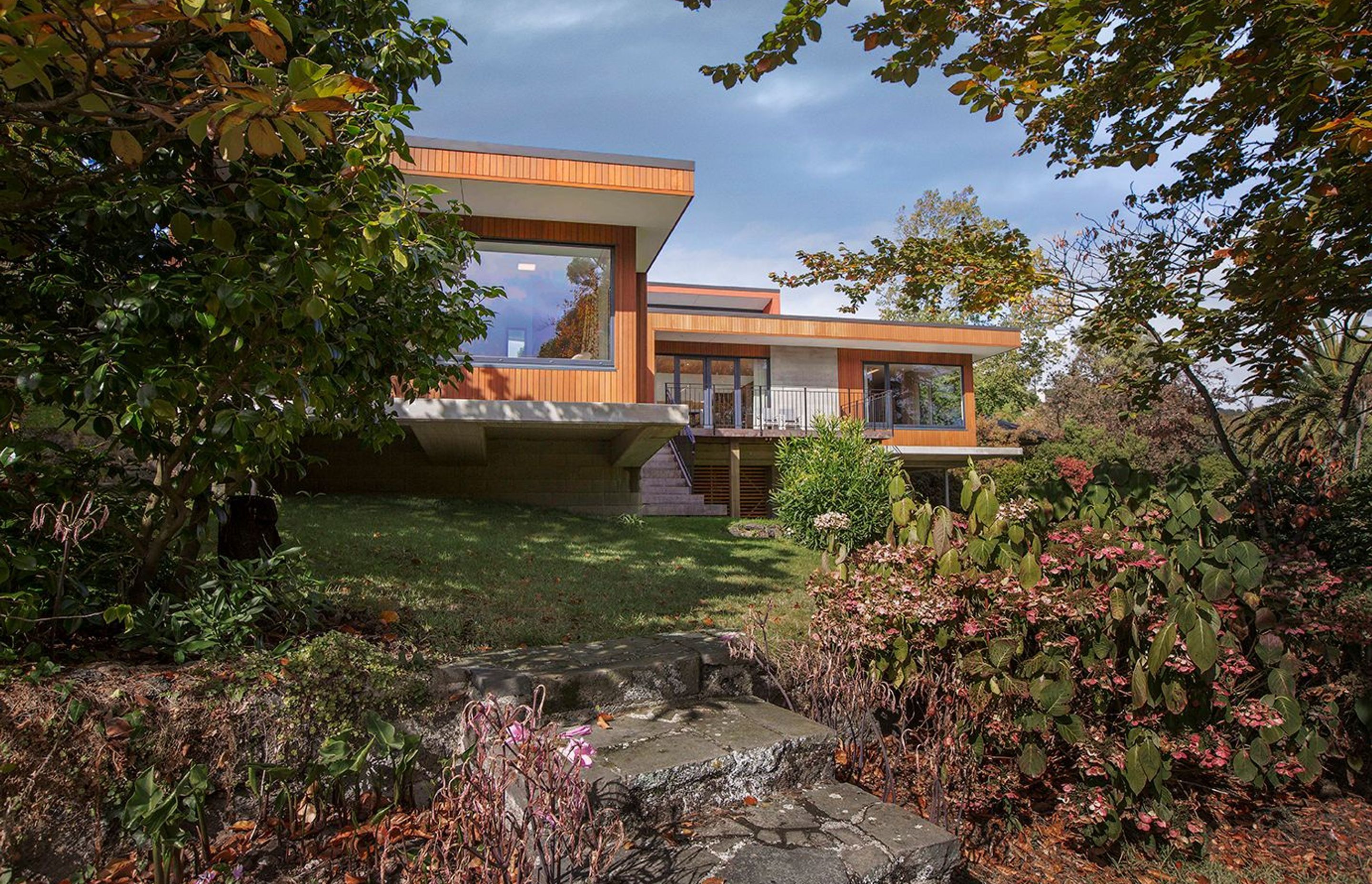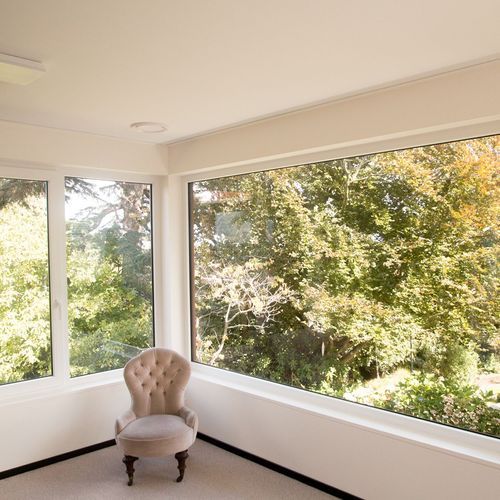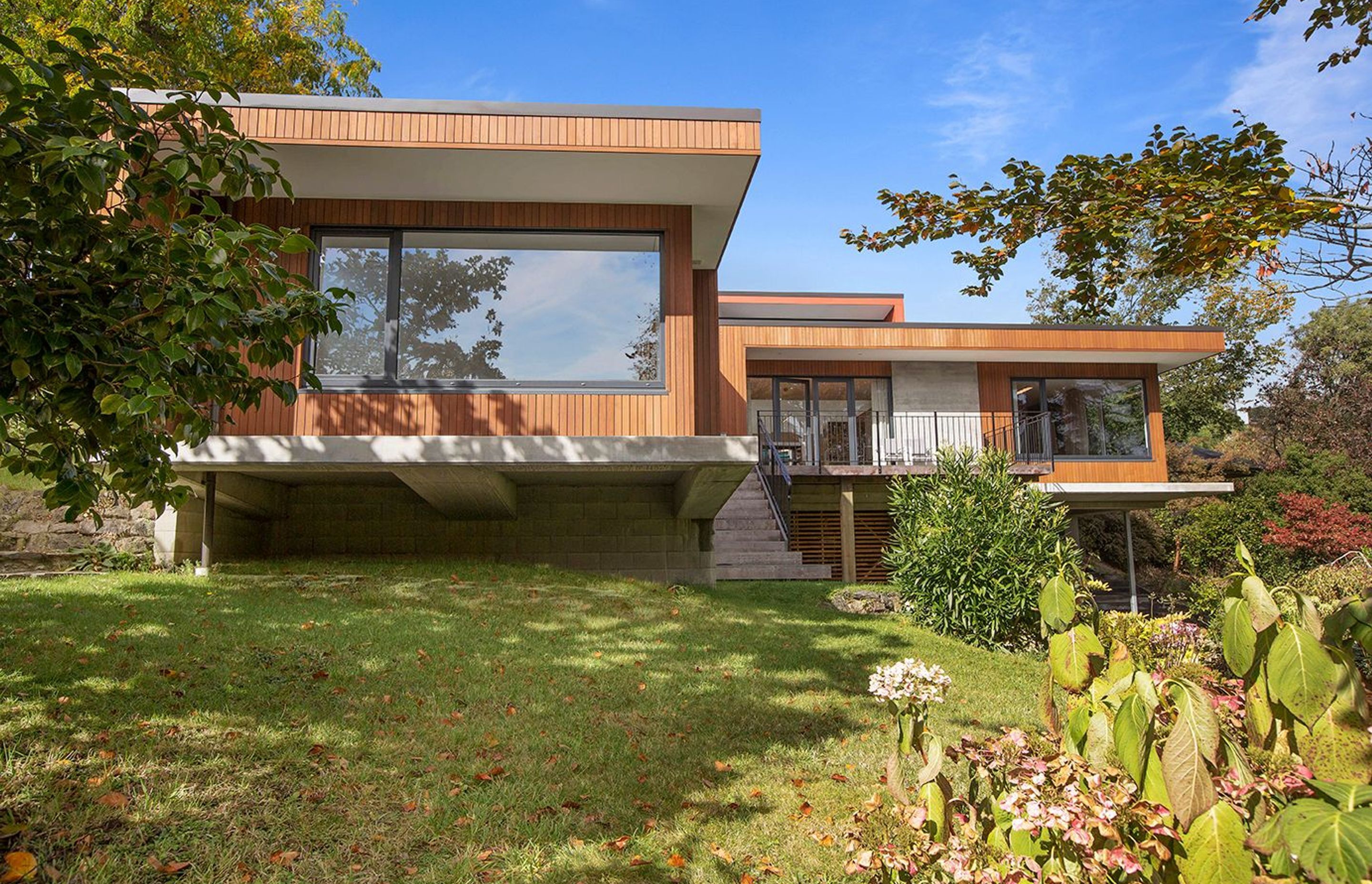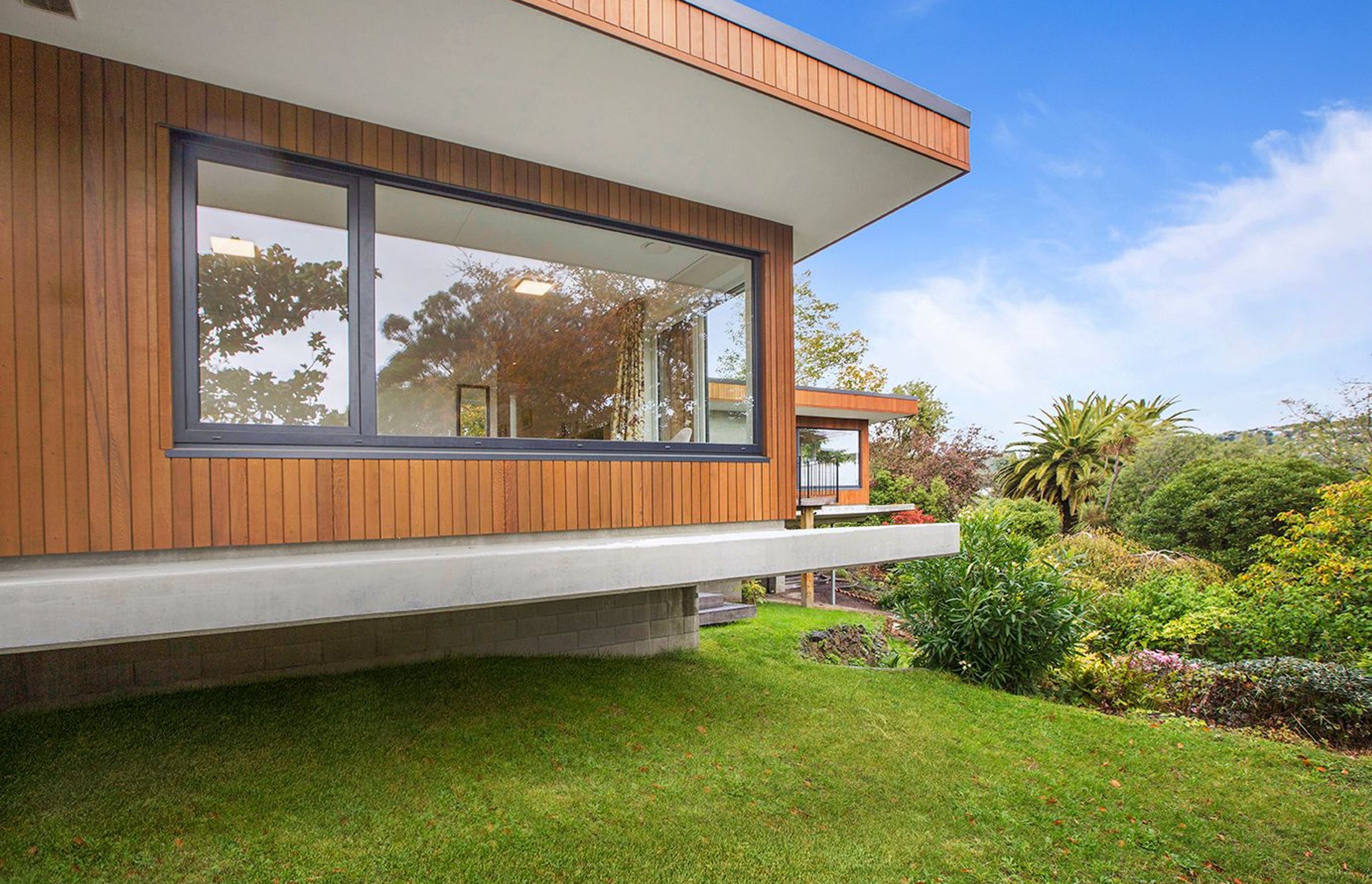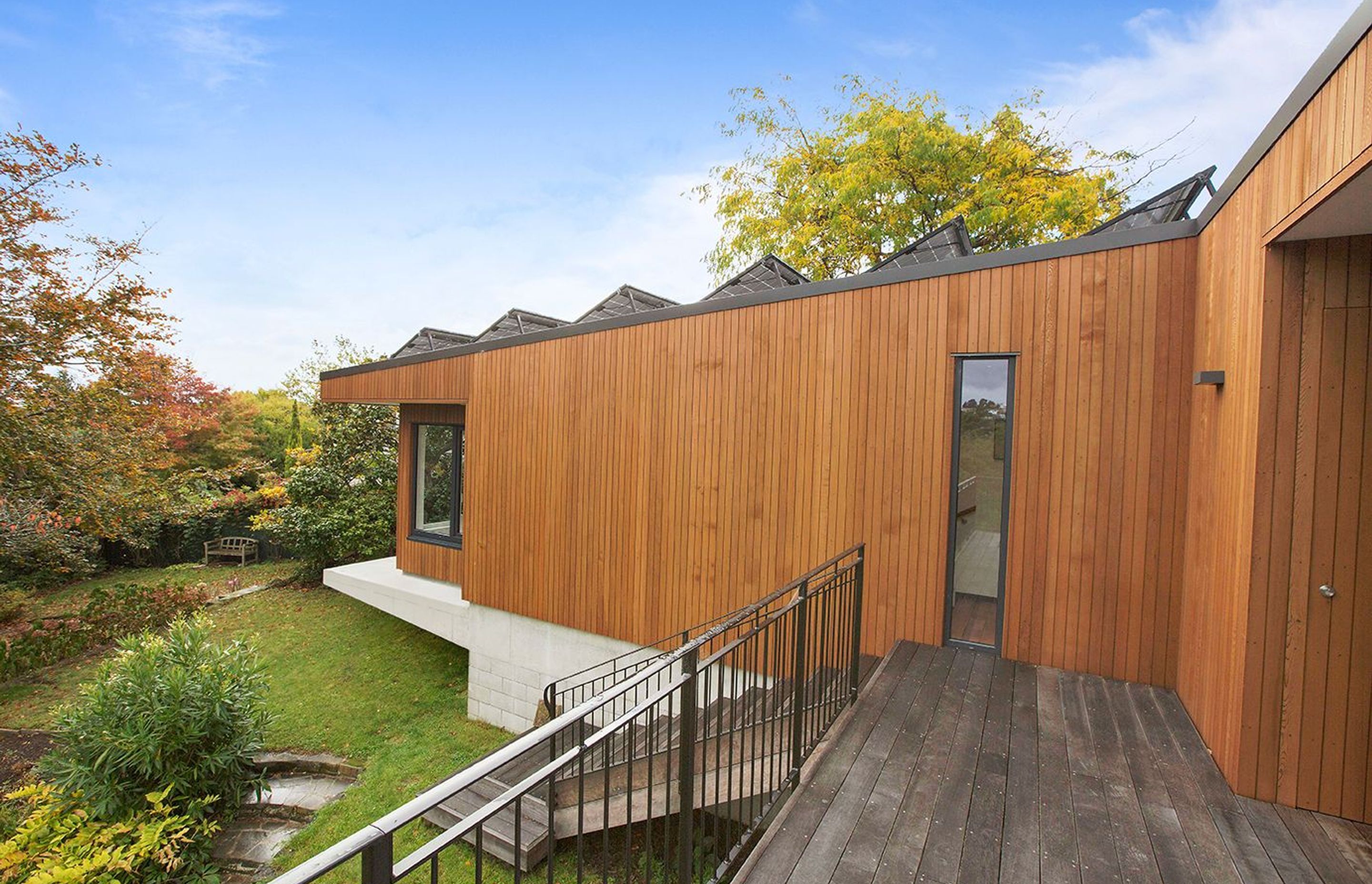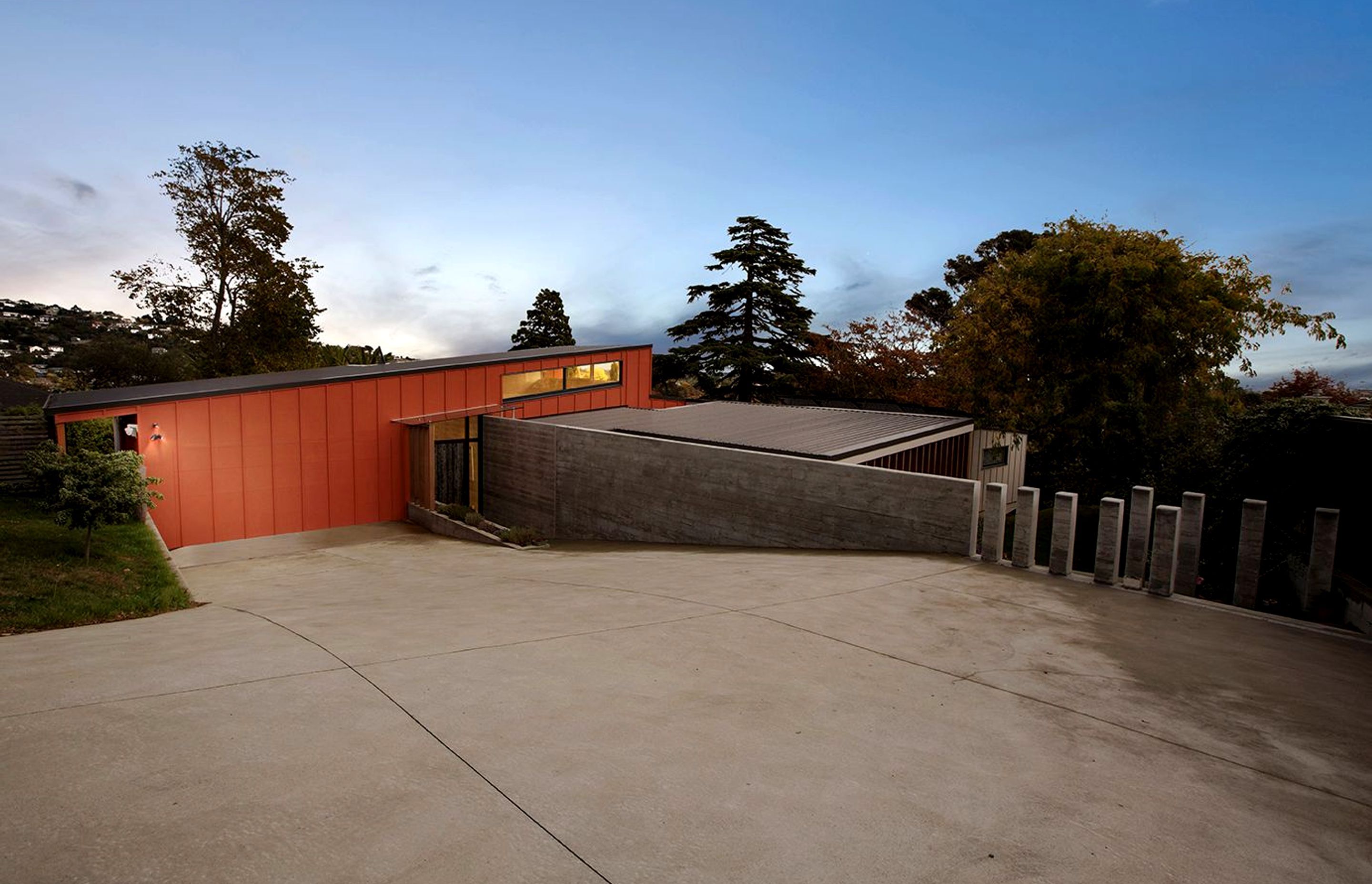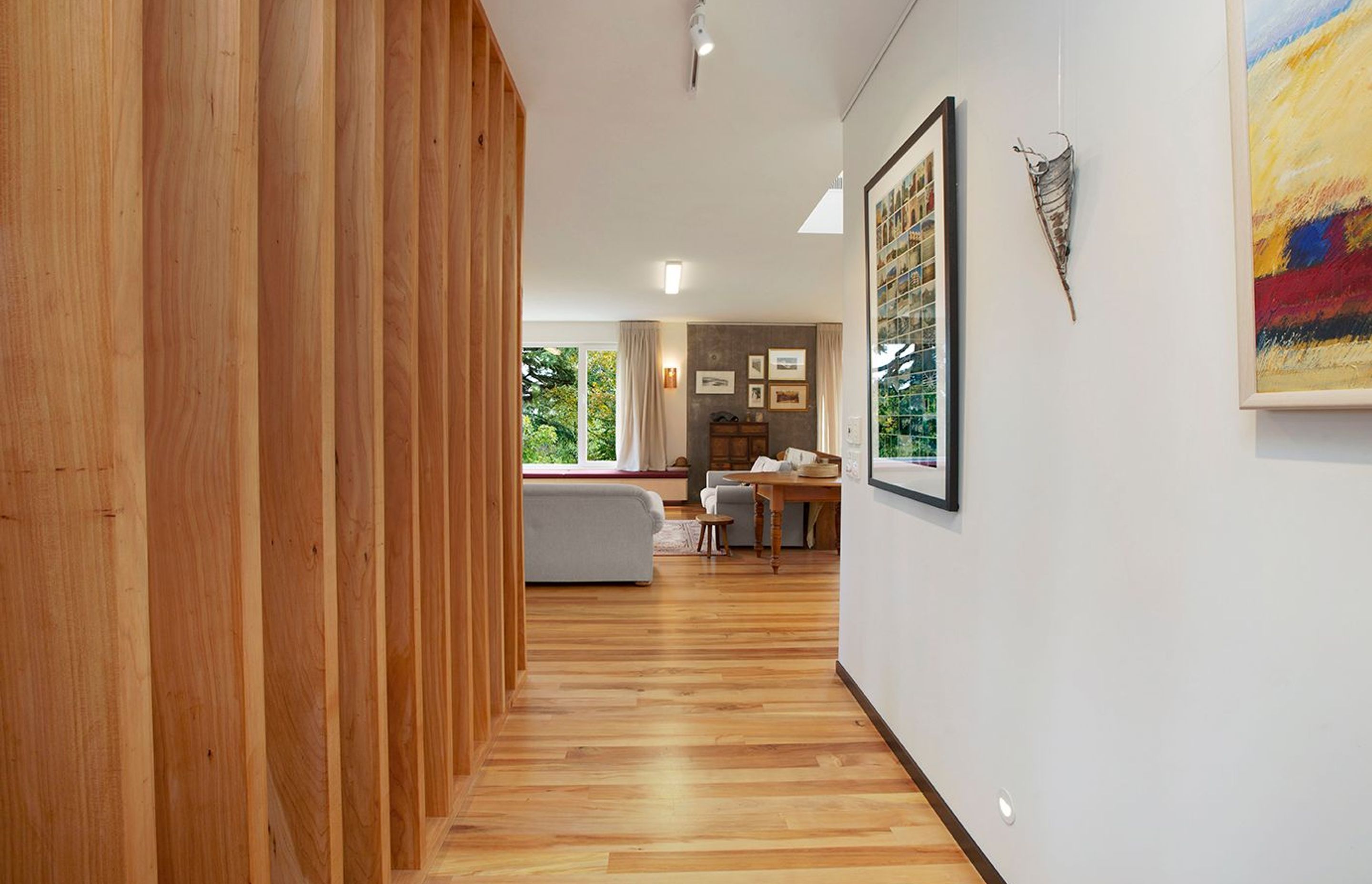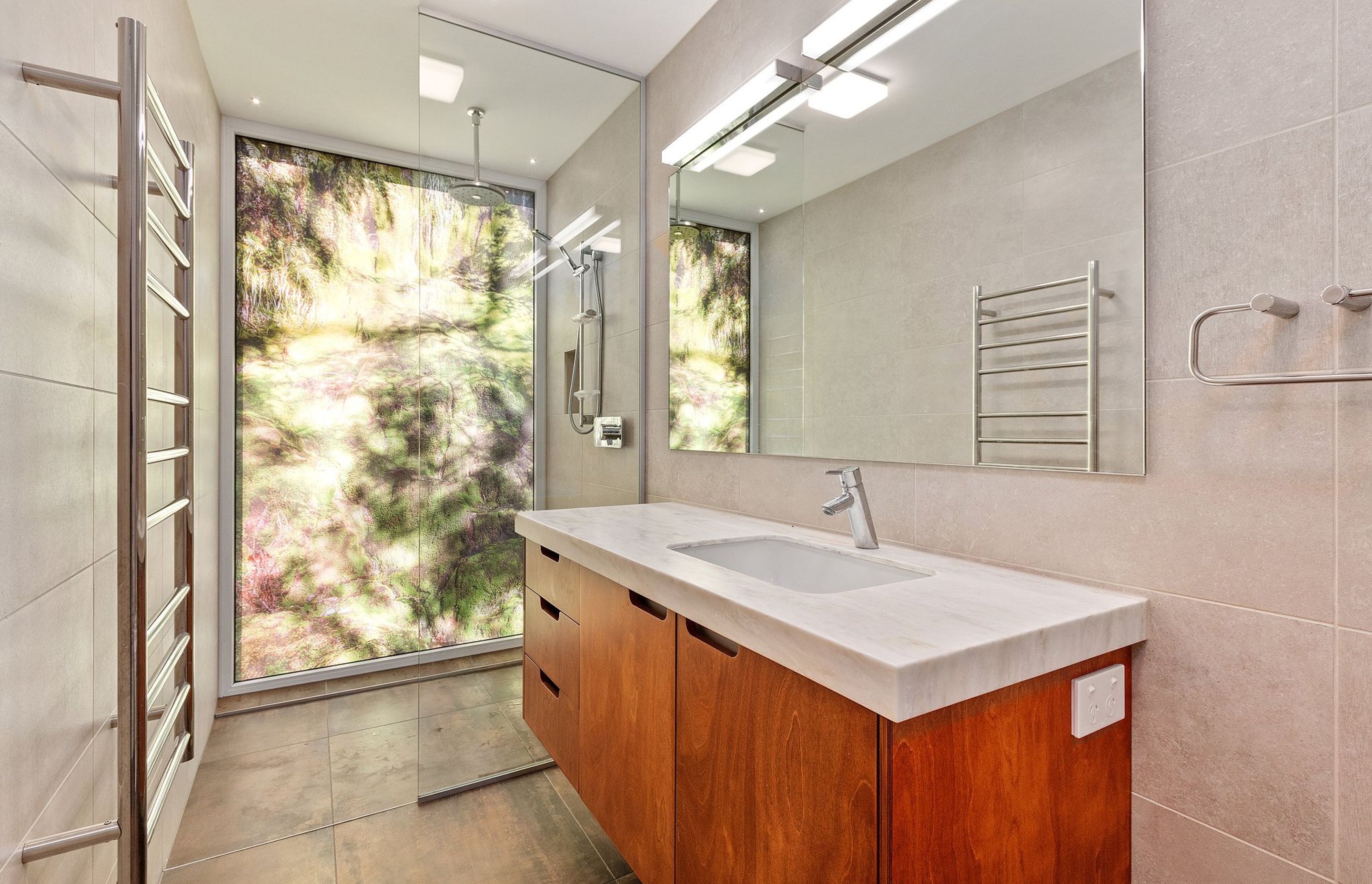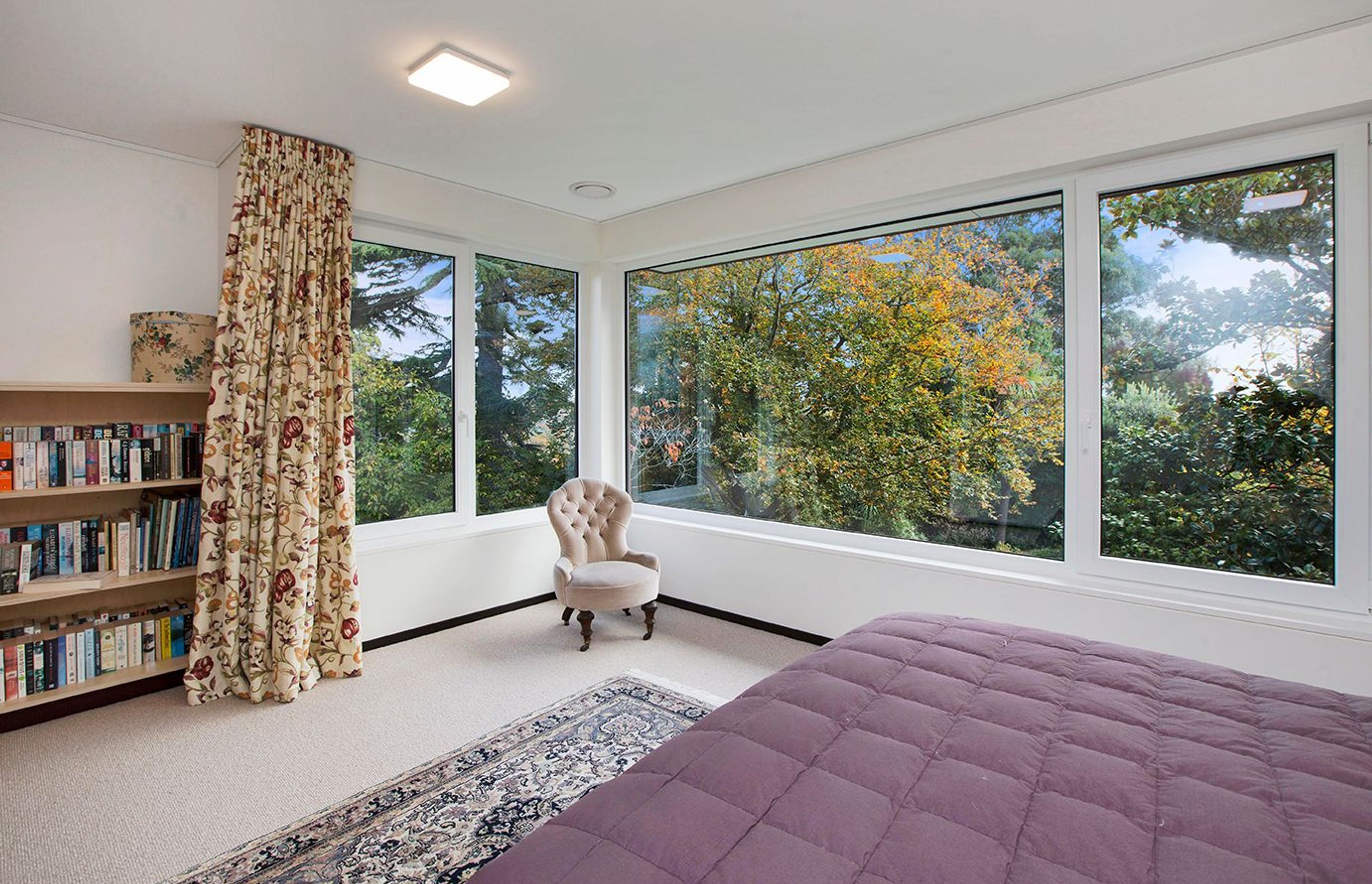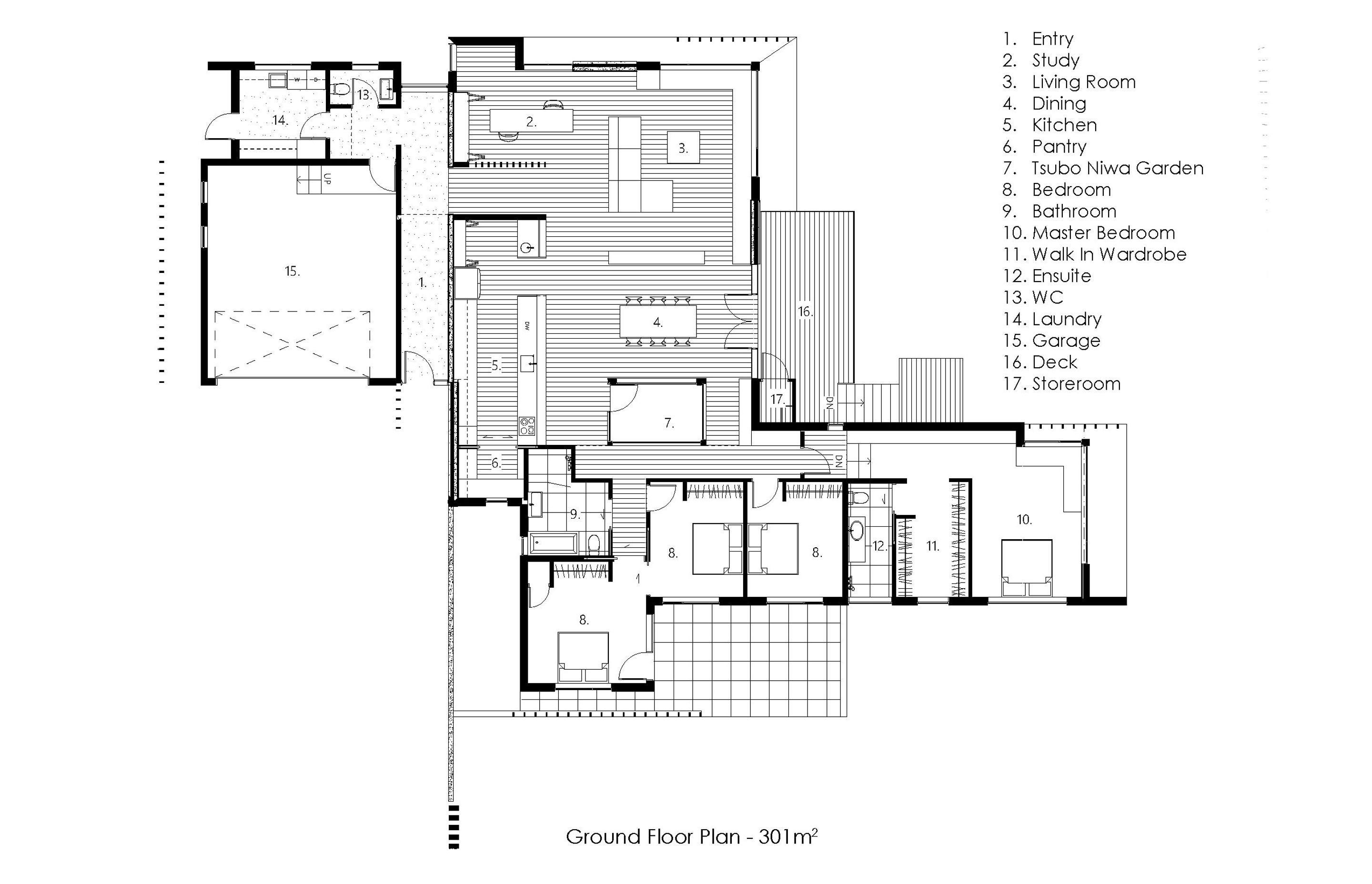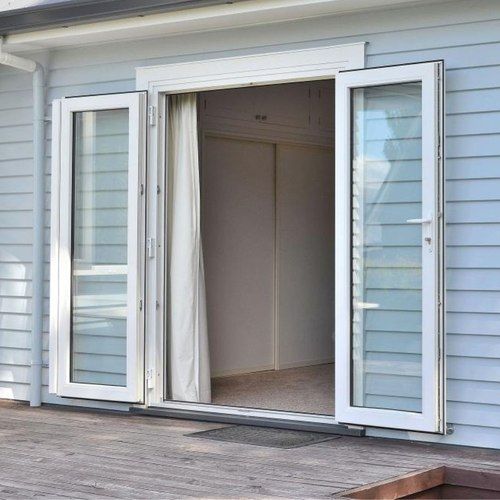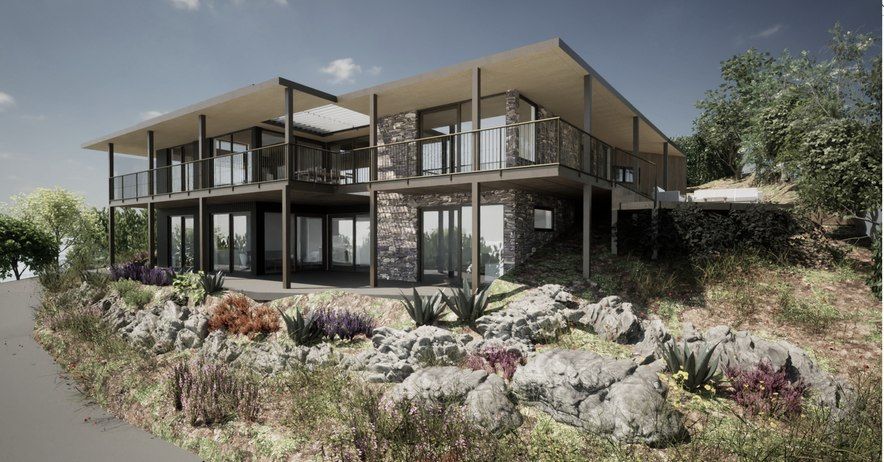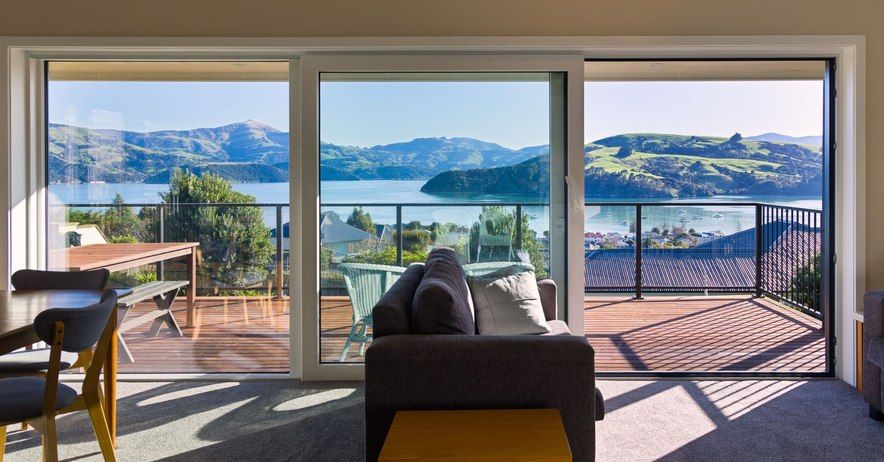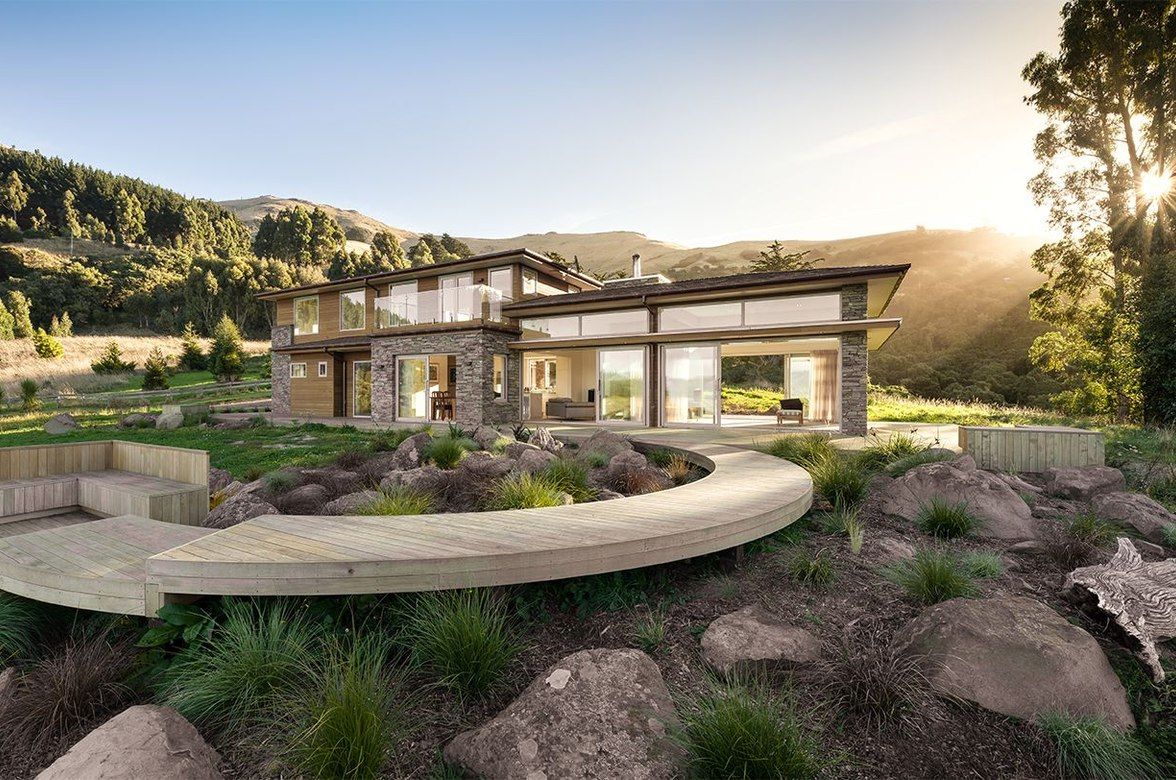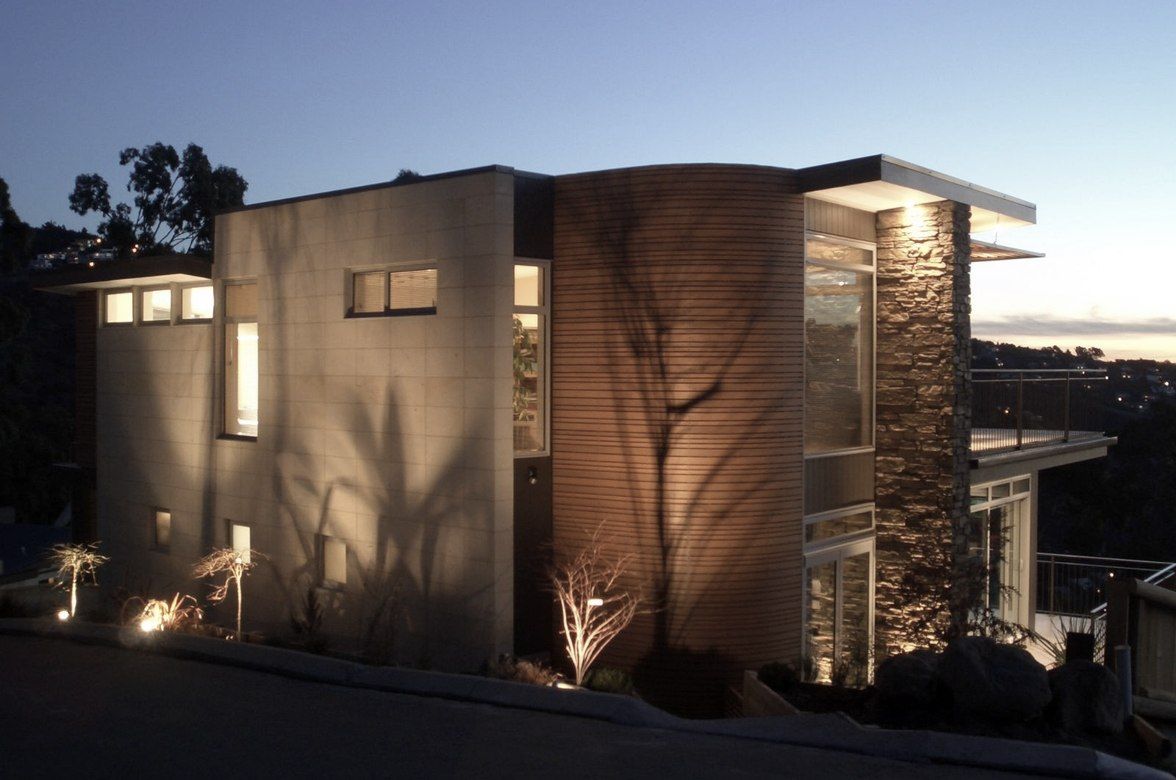Hillsborough Home
By Bob Burnett Architecture
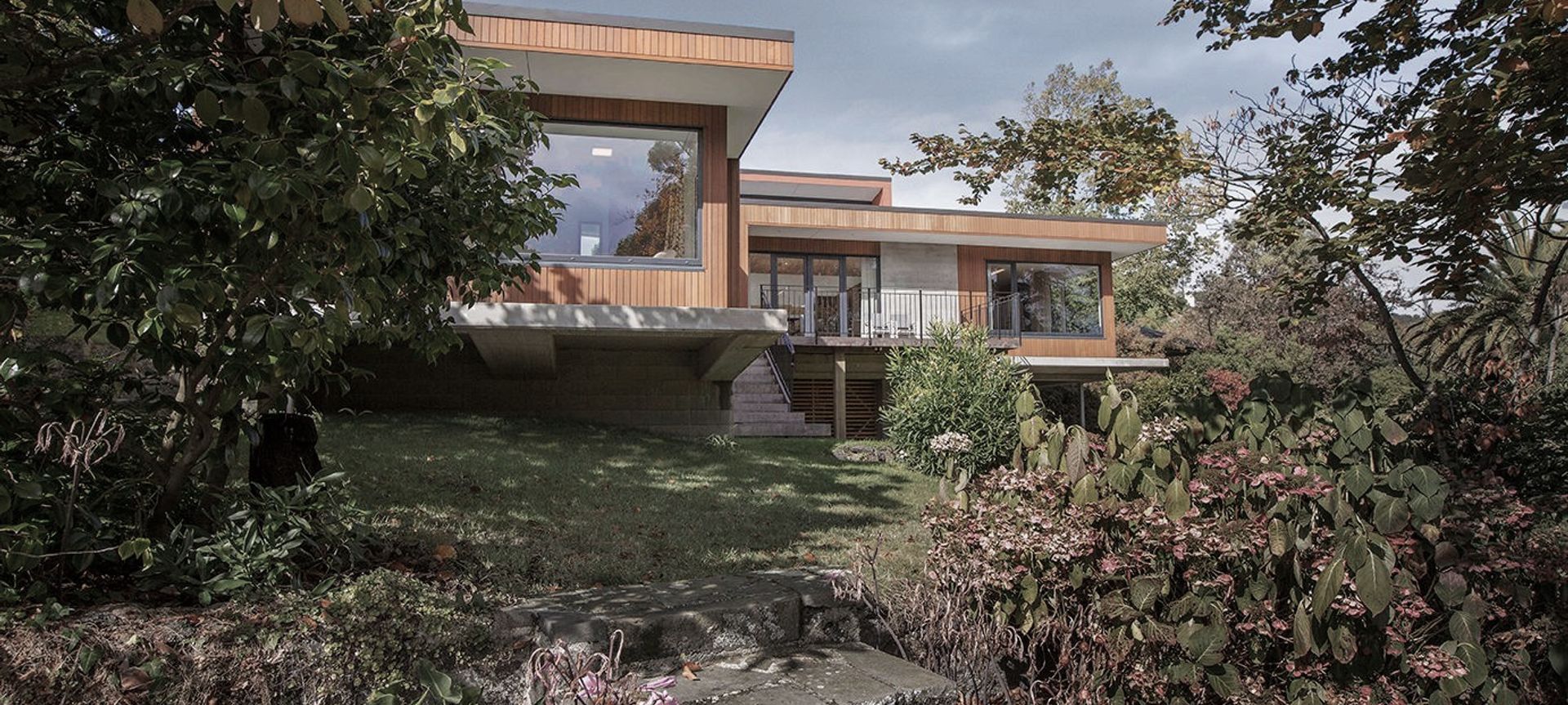
Situated on the lower slopes of the Port Hills, Hillsborough House has been designed to gently fit the terrain with minimal impact on the environment, floating above a lush garden featuring mature trees which were left behind when a quake-damaged home was demolished. The brief was for a resource efficient, environmentally sound home to house a large collection of art and literature and integrate seamlessly with the natural surroundings.
From the street, the building is understated and well-grounded by the fair-face, concrete spline wall running the extent of the house and into the landscape. This acts as a shield from the busy street separating the garage and utility areas from the outward-looking living spaces. The brutalist materiality of the entry hall forms a compressed, urban art gallery glimpsing the surrounding bush through a fully glazed wall at the end of the passage. The gallery transitions to light-filled lounge, dining and kitchen areas which embrace the leafy landscape and vistas across the treetops to the city and mountains beyond. The bedroom wing cantilevers out, reaching towards the bush surround
so that occupants feel as though they are sleeping in the trees. The corner of the living room has been orientated so that the expansive corner glazing opens up a view directly through a gap in the trees to the city beyond.
Design Features and Creative Solution
Leading European, environmentally sound principals are an integral part of the design with the thermal mass of the concrete walls and floor combining with solar powered, underfloor heating to store and transfer heat allowing the house warm and cool itself accordingly throughout the year. Focussing on airtightness and eliminating thermal bridging enhances the energy efficiency further while greywater and rainwater collection ensures the house operates as a holistic system optimising resource use and mitigating the environmental impact of the building. Expansive, high-performance glazing provides passive solar gains while generous overhangs to the north and west protect the
home from overheating. The biophilic nature of the design is articulated throughout, with natural timber elements, precast concrete panels and Japanese elements. The Tsubo-Niwa, a Japanese internal courtyard/garden, which is fully glazed on all sides, allows light and nature into the heart of the large living space and adjacent passage. The 4.5m high ceiling above the kitchen forms a light shaft capturing morning and afternoon sun allowing the house to remain closed off from the southern, street side. A full-height glazed wall in the master ensuite utilises a digitally printed moss garden backlit by the morning sun to further blur the threshold between inside and out. The transition between the urban street frontage and garden is broken down as the concrete spline wall disintegrates around the path leading to the guest entry with timber fins drawing the visitor into the garden and enclosing a secluded morning courtyard.
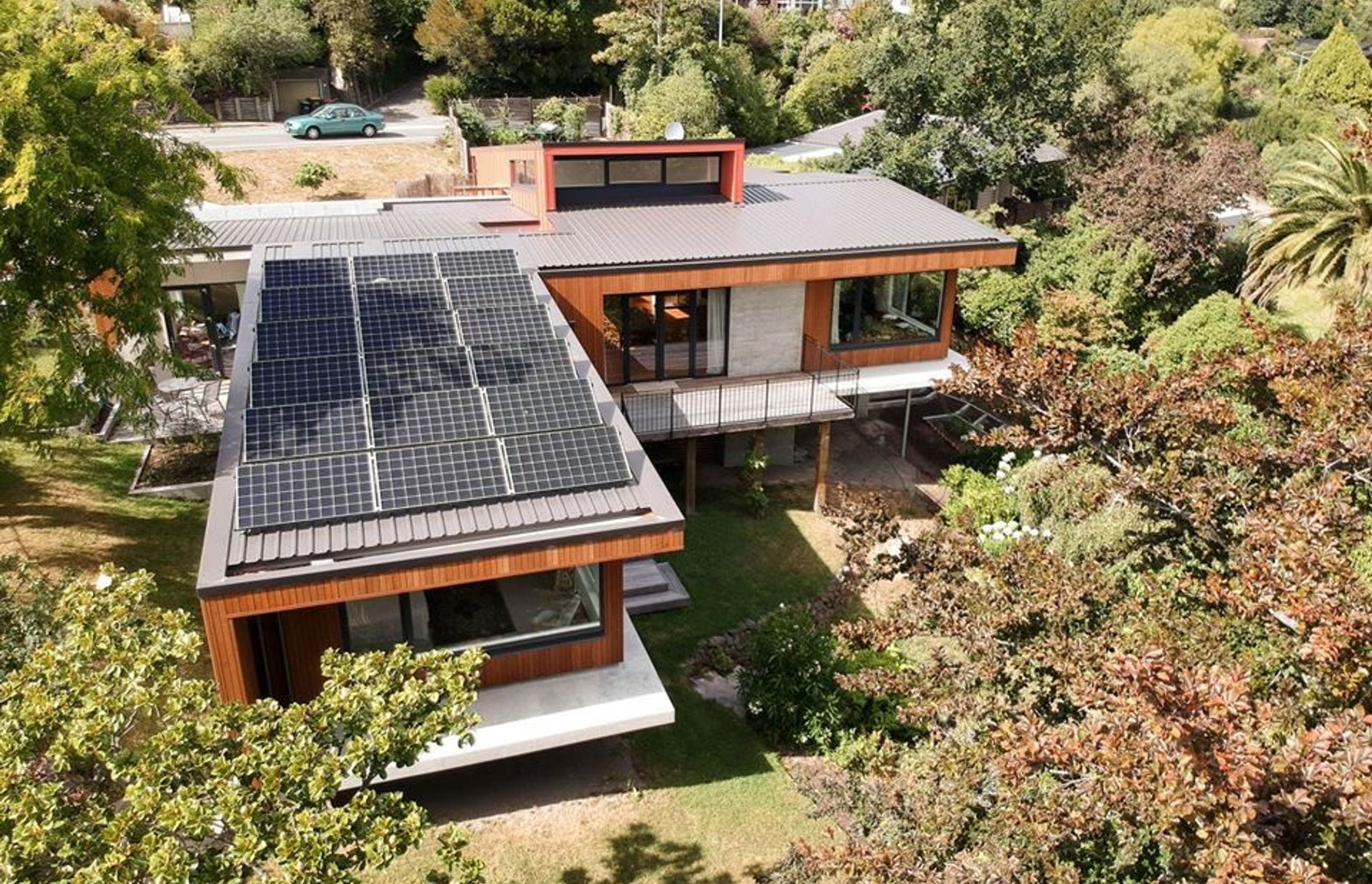
Products used in
Hillsborough Home
Professionals used in
Hillsborough Home
More projects from
Bob Burnett Architecture
About the
Professional
Bob Burnett Architecture has a longstanding reputation for award winning, energy-efficient, space efficient designs that are super sustainable. Exquiste organic architecture that exhibits the fusion ideas from the two directors, Bob Burnett and Japanese Architect, Shizuka Yasui. An overarching theme ‘Japandi’ - is the intersection of Japanese and Scandinavian design aesthetics, both of which utilize minimalist design principles and organic architecture. Research shows the Japandi aesthetics and techniques enhance people's health and well-being by integrating warm and natural elements in biophilic design. Simple elgence cleverly connecting with nature, through timeless design that also minimises impact on the environment.
Bob Burnett Architecture has championed energy-efficient, environmentally sound architecture for two decades. Bob designed New Zealand’s first 7 & 10 Homestar rated homes. His ethos is to create both beautiful and high- performance buildings for better livability, health, and comfort. He wants to normalise building better by helping people understand the link between New Zealand’s suboptimal building code standards, that are 20 years behind other OECD countries and alarming health and wellbeing statistics. In late 2015 Bob founded the Superhome Movement and earlier co-founded the Quakestar rating system after the Christchurch earthquakes. Recently Bob received the Sustainable Business Network Sustainability Superstar award.
- ArchiPro Member since2016
- Associations
- Follow
- Locations
- More information

